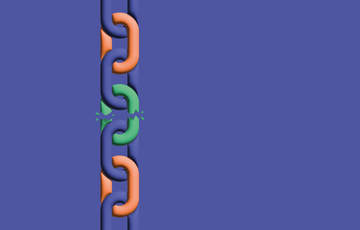
Sebastien Jotterand: “A general practitioner can solve 19 out of 20 cases”
Publié il y a 9 mois
18.08.2024
Partager
IN VIVO How is the gap being felt between the number of physicians and the population’s needs?
SEBASTIEN JOTTERAND As so many new doctor’s offices are opening, it’s difficult to tell how bad the problem is. But in reality, Switzerland is not keeping up. It takes at least 12 years to train a doctor, which means that people are at high risk of ending up in a medical desert. Actually, the difficulties that people may encounter depend a lot on whether or not they already have a GP. If they don’t, it can be tough to hear that a particular doctor is no longer taking patients when people urgently need a consultation. The amount of time that people have to invest in obtaining an appointment, sometimes simply for an opinion or a check-up, is totally unreasonable. Cantons more broadly have a duty to guarantee access to care, but what is happening is that people are being prevented access to primary care.
Plus, the difference between supply and demand is widening for internal medicine specialists in a context of new challenges. For example, more young people under the age of 30 have been requesting consultations in recent years. Demand has risen by an estimated 22.7%, mainly for mental health problems. We therefore have to strengthen the primary care offering as a way of supporting today’s young population, which is feeling an ever-growing hopelessness about the climate, the job situation and unstable world peace.
IV Where should we start in going about strengthening family medicine?
SJ I’m co-president of the organisation Médecins de famille et de l’enfance Suisse, so this question is constantly on my mind. To provide comprehensive, high-quality basic care, we must first take action in training. In my opinion, one of the major challenges is to bring back hands-on training. Nothing is more motivating than direct contact with patients. In Switzerland, 1,200 doctors are trained every year. We would like to increase this by 50% to 1,800 graduates a year. To encourage the next generation of doctors, we also need to defend the professional image of family medicine. But there is a strong tendency to devalue anything that is human and relational. People love artisan bread but will also be fascinated by a baker who manages to triple his output in a short amount of time. This impacts family medicine directly, because the current fee schedule sets higher rates for technical medical acts than for interpersonal acts.
IV Do you think that the general public misunderstands the role of general practitioners?
SJ A lot of people think that you see a general practitioner at the beginning of the process and that they don’t know how to solve problems, that they simply triage patients, referring them to other specialists based on their symptoms. However, statistically, GPs can solve 19 out of 20 cases through advice, medication and physiotherapy referrals. This is a key way of simplifying the system and limiting costs by avoiding unnecessary examinations. It’s a win-win situation, because no one is going to have a biopsy to take their mind off things in their spare time. While GPs are indeed primary care specialists, they can also be the last doctor to care for patients, following people to the end of their lives, such as with palliative care. And between the two, the family doctor is a partner in dialogue who supports patients through the healthcare system and guides them with detailed knowledge of their state of health.
IV What measures should be put in place to improve doctors’ working conditions?
SJ In addition to aligning salaries more with other specialities, we need stronger collaboration with medical assistants in practices, nursing staff and pharmacists. For example, a certificate training course exists for medical assistants that better recognises the value of their work. Certified assistants can handle part of the clinical follow-up for conditions such as diabetes, hypertension and other chronic diseases. This helps to take some of the caseload off GPs. And solutions need to be found urgently, because GPs are under pressure due to the shortage. Many of these physicians end up in a cycle where all they do is respond to emergencies. They risk burnout and feeling demotivated. This creates a counterproductive system in which the scarcity of family doctors could exacerbate the shortage.
IV Are there also solutions in the area of patient relations for improving the excess workload?
SJ One encouraging approach is to promote self-management. That involves, where possible, sharing tools with people with long-term illnesses and their families to help them gain experience in managing their treatment. With this approach, patients become experts and family doctors are merely there to support them. This builds a collaborative relationship in which the patient is a proactive partner in the care process.
Biography
Sébastien Jotterand graduated in 1990 with a degree in general internal medicine in Geneva. He currently works at the Aubonne Medical Centre. Since 2011, he has been working with the Department of Family Medicine in Lausanne, where he has also been a lecturer. He regularly takes in students and residents at his practice. He currently co-chairs the association Médecins de famille et de l’enfance Suisse, which represents the professional, political and economic interests of general practitioners.


